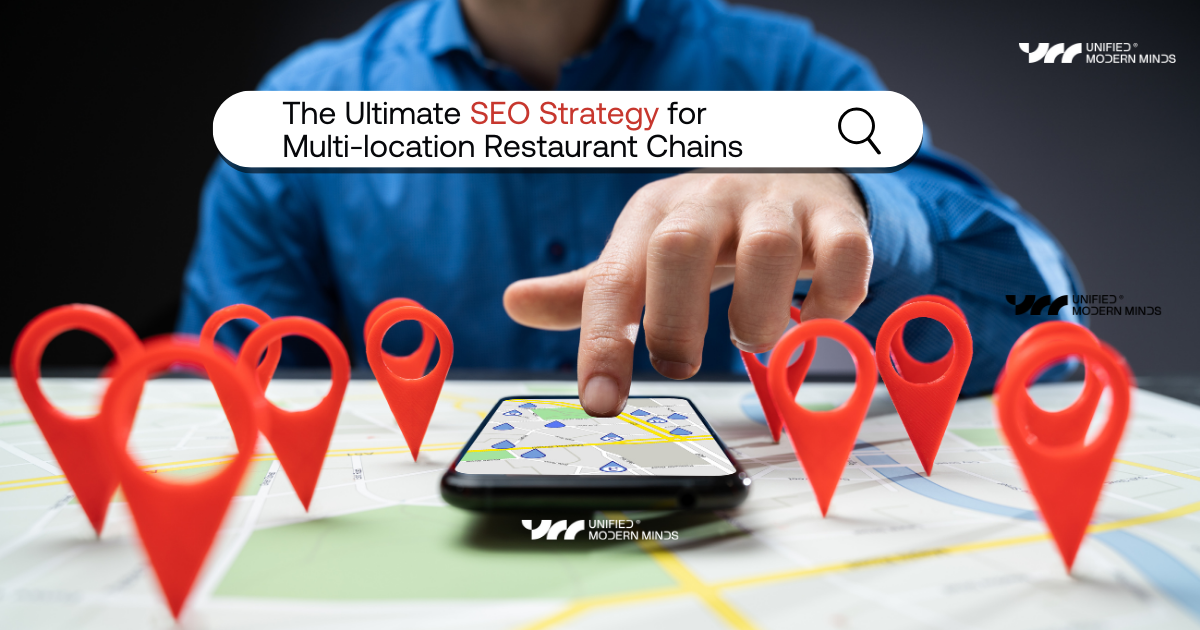


Having a multi-location restaurant chain is thrilling but also demanding. Every branch carries its own identity, clientele, and competitors. On the other hand, you require consistency in branding as well as visibility in all cities or neighborhoods.
The largest challenge? Customers no longer find restaurants via billboards or flyers. They whip out their phones, search for "pizza near me" or "best family restaurant in [city]," and click on one of the top links.
If your restaurant chain isn't listed in those local search results, you're turning customers over to competitors. That's where multi-location SEO enters.
This guide distills how restaurant chains can leverage SEO to:
Local search is the foundation of restaurant marketing today. Google says nearly 50% of all local searches lead to a visit to a store within 24 hours.
For restaurants, this means:
Suppose you own a chain restaurant with 10 locations in Texas. A patron in Austin types "best tacos near me" into a search. If your Austin location doesn't appear but the Dallas location does, that search was a waste. Multi-location SEO ensures the correct branch appears for the correct customer.
Each restaurant branch deserves its own specific page. Do not rely on a single, generic "Our Locations" page for all outlets.
Each page must have:
Tip: Create distinct content for every page. Don't repeat "We serve great Italian food." Instead, emphasize uniqueness: "Our Austin location is famous for its wood-fired pizzas and rooftop dining area."
Google Business Profile (fka Google My Business) is your restaurant's online front door. It's usually the first thing that customers notice.
To optimize:
Why it matters: Google assigns higher exposure to active, well-cared-for profiles.
Generic terms such as "Mexican restaurant" are too general. Include location modifiers to better target searches.
Examples:
Use tools like Google Keyword Planner or SEMrush to identify high-intent local keywords for each branch.
Reviews are among the most powerful ranking signals for restaurants. More importantly, they establish trust.
Pro tip: Make small table tents or QR codes that link directly to your review page.
Search engines get confused when your restaurant's name, address, or phone number varies across directories.
Verify and refresh:
Consistency strengthens your local SEO and credibility.
Content marketing helps your brand stand out and attract searches. Rather than just sharing menus, share content that resonates locally.
Ideas:
This builds local relevance and gives customers more reasons to visit beyond food.
Most restaurant queries happen on mobile. The majority are voice searches ("Hey Google, search for a pizza joint near me").
To optimize:
Example: Instead of just "restaurant menu," optimize for: "Does [Restaurant Name] in Houston have vegan options?"
SEO is ongoing. Use Google Analytics and Google Search Console to track:
This helps refine your strategy.
SEO for multi-location restaurants isn't about ranking one site—it's about building visibility for every branch. From location pages to reviews to local keywords, every detail matters.
When done right, SEO converts hungry searchers into loyal customers walking through your doors.
Q1: Why do restaurant chains require individual location pages?
Each branch serves a different neighborhood. Individual pages help Google match the right branch to the right customer search.
Q2: How significant are Google reviews for restaurants?
Extremely significant. They directly affect local rankings and customer decisions.
Q3: Is social media useful for restaurant SEO?
Yes. Social posts improve brand recognition and drive local search traffic.
Q4: How long will results last after implementing restaurant SEO?
Expect steady improvements within 3–6 months.
Q5: Do small franchises need to invest in SEO as well?
Yes. Even single-store or two-store businesses benefit from local SEO for more traffic and online orders.
Avoid unnecessary & expensive payments consumed by consultants. With UMM, deal and work directly with decision makers, designers, engineers & avoid irrelevant middle-men
Your growth is our major focus. Scale and grow within your planned budget using our flexi & scalable pricing models. It helps you stay on target
Design-thinking, problem solving, innovation, growth hacks are what excites us. We share the same excitement you have towards solving problems
Utilise Design Thinking to create your project's masterplan. Extensive experience (and awards) equips us with the ability to create effective growth and delivery.
London
NEWYORK
Dubai
CHENNAI
We work round the clock
24 x 7 X 365
© #ummdigital